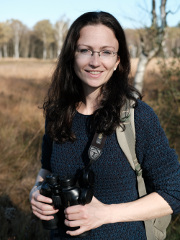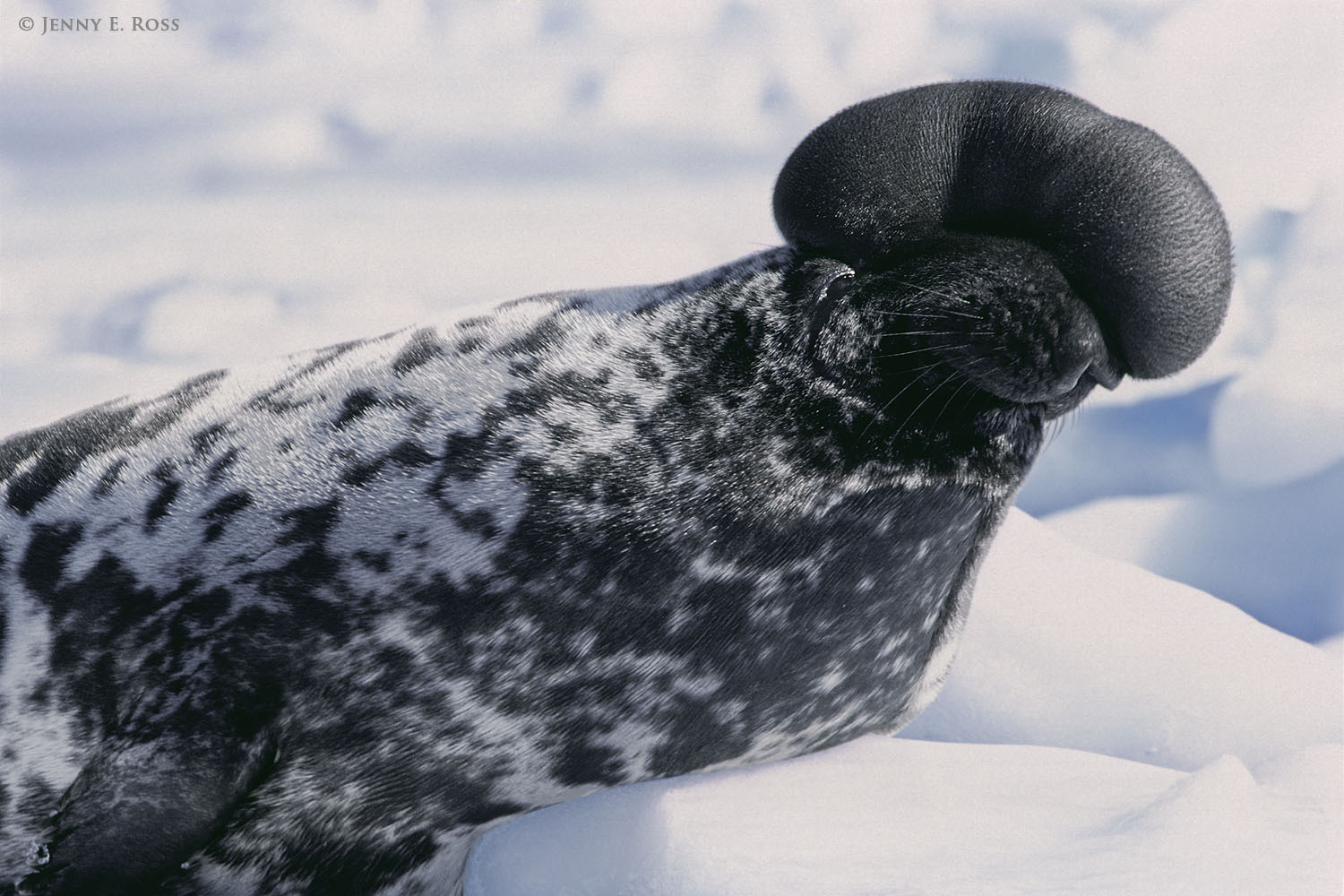Dr. Cornelia Geßner

Postdoktorandin
Molekulare Tierphysiologie
Anschrift
Büro
Kontakt
Forschungsinteressen
Research interests
My research focuses on the adaptation of the brain of marine mammals to low oxygen levels (hypoxia) that are experienced during long dives. While most terrestrial mammals suffer from severe neuronal damage after only a few minutes of hypoxia, marine mammals can tolerate hypoxic conditions during extended breath-hold dives. For example, the hooded seal (Cystophora cristata) can dive for about 50 minutes and to a depth of 1000 meter. Employing a variety of comparative analyses between diving and non-diving mammals, I study the molecular adaptations of the brain in the hooded seal and other marine mammals to hypoxia and oxidative stress.

Klappmützenrobbe (Cystophora cristata) © Jenny E. Ross / LifeOnThinIce.org
I enjoy to address different evolutionary questions, thereby studying a variety of systems and acquiring new lab techniques and analytical approaches. In the past, I have studied host-parasite coevolution in insects and the genetic basis of sexual selection in fish.
Curriculum vitae
Curriculum vitae
| since 10/2015 | Postdoctoral Researcher, University of Hamburg |
| 05/2011 - 05/2015 | Ph.D. in Genetics, University of Otago, New Zealand Project: ”Exploring the genetic basis of cryptic female choice in an externally fertilizing species: the Chinook salmon” |
| 10/2003 - 01/2010 | M.Sc. in Biology (Diplomarbeit), Martin-Luther Universität Halle-Wittenberg Project: "QTL mapping of Varroa destructor - resistance in the honey bee Apis mellifera L." |
| 01-06/2007 | Exchange semester, University of Pretoria, South Africa, DAAD stipendiary Honour’s Project: "Dung beetle composition as bioindicator for habitat quality in the Kalahari.” Review/essay: ”The effect of global warming on bird migration." |
Scholarships and Awards
| 2019 | Funding for a 3-year doctoral position to support my research, granted by the Frauenförderung der Universität Hamburg |
| 2013 | NZSBMB Travel Award to attend the XIV Congress of the European Society for Evolutionary Biology (ESEB 2013) |
| 2013 | Division of Health Science Travel Award, University of Otago, to attend the ESEB 2013 |
| 2013 | Departmental Travel Award, University of Otago |
| 2011 | University of Otago Doctoral Scholarship |
| 2007 | DAAD Scholarship to study one semester at the University of Pretoria |
Publikationen
Publications
Geßner, C., Krüger, A., Folkow, L.P., Fehrle, W., Mikkelsen, B., Burmester, T. „Transcriptomes suggest that pinniped and cetacean brains have a high capacity for aerobic metabolism while reducing energy-intensive processes such as synaptic transmission.” Front. Mol. Neurosci. 15 (2022):877349
Geßner, C., Stillger, M.N., Mölders, N., Fabrizius, A., Folkow, L.P., Burmester, T. “Cell culture experiments reveal that high S100B and clusterin levels may convey hypoxia-tolerance to the hooded seal (Cystophora cristata) brain.” Neuroscience 451 (2020): 226 – 239
Gessner, C., Nakagawa, S., Zavodna, M., Gemmell, N.J. "Sexual selection for genetic compatibility: the role of the major histocompatibility complex on cryptic female choice in Chinook salmon (Oncorhynchus tshawytscha)." Heredity 118.5 (2017): 442-452.
Geßner, C., Johnson S.L., Fisher, P., Clarke, S., Rutherford, K., Symonds, J., Gemmell N.J. "Male–female relatedness at specific SNP-linkage groups influences cryptic female choice in Chinook salmon (Oncorhynchus tshawytscha)." Proc. R. Soc. B. Vol. 284 (2017). No. 1859.
Behrens D, Huang Q, Geßner C, Rosenkranz P, Frey E, Locke B, Moritz RFA and Kraus FB. Three QTL in the honey bee Apis mellifera L. suppress reproduction of the parasitic mite Varroa destructor. Ecol Evol; 1(4) (2011): 451-458.
Deutschlandfunk: Geheime Damenwahl: Königslachsweibchen sind befruchtungsselektiv. (mp3>
Konferenzbeiträge
Conference presentations
2019
Presentation at the Annual meeting of the German Zoological Society (DZG): ”All you need is love... no oxygen: detecting positive selection in deep-diving marine mammals”
2017
Poster at the Annual meeting of the German Zoological Society (DZG): “Do clusterin an S100B protect neurons during hypoxia in diving mammals?“
Poster at the Conference of the European Society for Evolutionary Biology (ESEB) in Groningen, Netherlands: ”Adaptations of the brain to hypoxia induced by diving in marine mammals”
Poster at the meeting of the European Cetacean Society (ECS) in Middelfart, Denmark: ”The diving brain: adaptations to hypoxia in marine mammals”
2016
Poster at the Annual meeting of the German Zoological Society (DZG): ”Adaptations of the brain tp hypoxia induced by diving in marine mammals”
Poster at the XIXth International Conference on Oxygen Binding and Sensing Proteins (O2BIP) in Hamburg, Germany: ”Adaptations of the brain tp hypoxia induced by diving in marine mammals”
2015
Poster at the meeting of the Society for Molecular Biology and Evolution (SMBE): ”Sexual selection for genetic compatibility: Exploring the genetic basis of cryptic female choice in Chinook salmon (Oncorhynchus tshawytscha)”
2014
Poster at the Otago School of Medical Science Postgraduate Colloquium, University of Otago
2013
Presentation at the Conference of the Genetics Society of AustralAsia (GSA), University of NSW, Sydney: ”The genetic basis of cryptic female choice in Chinook salmon (Oncorhynchus tshwaytscha)”
2012
3-Minute-Thesis-Talk at the Allan Wilson Centre for Molecular Ecology and Evolution Annual Meeting, Palmerston North, New Zealand: ”The MHC and female sperm choice in Chinook salmon.
2012/2011
Presentations at the Reproduction and Development Day, University of Otago
2011
Presentation at the Molecular Ecology Meeting, Akitio, New Zealand: ”Females’ secret preferences: Is there a genetic basis of cryptic female choice in Chinook salmon (Oncorhynchus tshwaytscha)?
